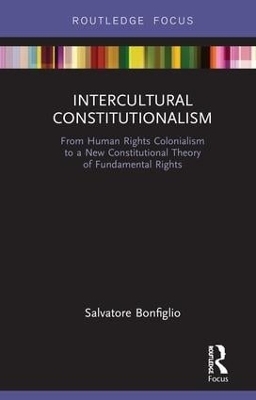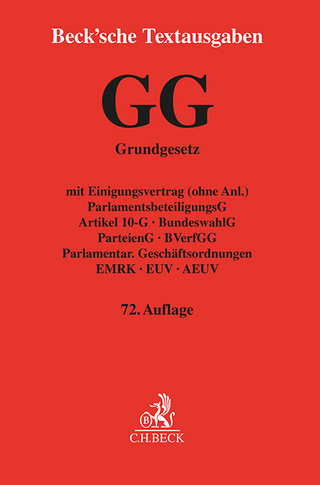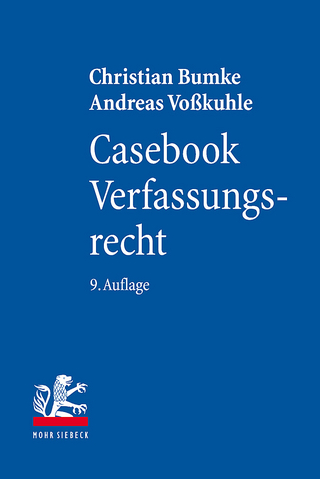
Intercultural Constitutionalism
Routledge (Verlag)
978-1-138-39390-5 (ISBN)
Salvatore Bonfiglio is Professor of Comparative Public Law at the Department of Political Studies of Roma Tre University and Director of the Multimedia Laboratory of Comparative Law. He is also Director of the online scientific period Democracy and Security Review.
Contents
Preface
Part I Fundamental Rights in the Light of their Evolution
Chapter 1 Fundamental Rights: Amidst "Nature" and "History" . . . . . . . . . . . . . . . . . . . . . . . . . . . ..
1.1 Introduction. . . . . . . . . . . . . . . . . . . . . . . . . . . . . . . . . . . . . . . . . . . . . . . . . . . . . . . . . . . . . . . . . . . . . . .
1.2 The universal notion of Human rights in light of theological and moral basis . . . . . . . . . . . . . . . . . . . ..
1.3 The rational conception of "natural rights" via an empirical basis . . . . . . . . . . . . . . . . . . . . . . . …
1.4 The socio-historical conception of rights and freedoms in contrast to "universal rights" . . . . . . . . . . . ..
1.5 The conception of freedom-based rights: from its declaration to its first constitutional enshrinement . . .
1.6 The conception of freedom-based rights: between nationalism and rigid legal positivism . . . . . . . . . .
References. . . . . . . . . . . . . . . . . . . . . . . . . . . . . . . . . . . . . . . . . . . . . . . . . . . . . . . . . . . . . . . . . . . . . . . . . .
Part II Fundamental Rights and Constitutional Interpretation
Chapter 2 Principles and Fundamental Rights as the Foundation of Constitutional Legal Orders. . . .
2.1 Supremacy of Constitutions and the prevalence of the fundamental principles they portray. . . . . . . . . . .
2.2 Fundamental Rights and limits to the power of constitutional review: a comparison of experiences
2.3 Subsequent elements to legal comparison. . . . . . . . . . . . . . . . . . . . . . . . . . . . . . . . . . . . . . . . . . . . . . .
2.4 Stability and the foundation of constitutional legal orders . . . . . . . . . . . . . . . . . . . . . . . . . . . . . . . . . . . . . .
2.5 New trends and the weakening of constitutional principles: global constitutionalism and societal constitutionalism. . . . . . . . . . . . . . . . . . . . . . . . . . . . . . . . . . . . . . . . . . . . . . . . . . . . . . . . . . . . . . . . . . . . . .
References. . . . . . . . . . . . . . . . . . . . . . . . . . . . . . . . . . . . . . . . . . . . . . . . . . . . . . . . . . . . . . . . . . . . . . . . . . .
Chapter 3 Fundamental Rights and the Interpretative Evolution of Constitutional Principles. . . . . .
3.1 Values, principles and interpretative canons. . . . . . . . . . . . . . . . . . . . . . . . . . . . . . . . . . . . . . . . . . . . . .
3.2 Evolutionary interpretation of the equality principle. . . . . . . . . . . . . . . . . . . . . . . . . . . . . . . . . . . . . . .
3.3 Homo oeconomicus in a liquid society. . . . . . . . . . . . . . . . . . . . . . . . . . . . . . . . . . . . . . . . . . . . . . . . . .
3.4 The Islamic veil and rational fundamentalism. . . . . . . . . . . . . . . . . . . . . . . . . . . . . . . . . . . . . . . . . . . .
3.5 The application of the equality principle to foreigners. . . . . . . . . . . . . . . . . . . . . . . . . . . . . . . . . . . . . . .
3.6. The constitutional principle on the value of labour and participation as fundamental social rights extended to Italian and foreign workers . . . . . . . . . . . . . . . . . . . . . . . . . . . . . . . . . . . . . . . . . . . . . . . . . . . . . . . . . .
3.7 Towards a fundamental rights citizenship . . . . . . . . . . . . . . . . . . . . . . . . . . . . . . . . . . . . . . . . . . . . . .
3.8 From a universal rights rhetoric towards an inter-cultural European citizenship . . . . . . . . . . . . . . . . . . .
References . . . . . . . . . . . . . . . . . . . . . . . . . . . . . . . . . . . . . . . . . . . . . . . . . . . . . . . . . . . . . . . . . . . . . . . . .
Part III Fundamental Rights in the Field of Intercultural Research. Between General Theory and Comparative Legal Analysis
Chapter 4 Fundamental rights in between cultural relativism and comparative legal analysis
4.1 Pluralist principle and cultural relativism . . . . . . . . . . . . . . . . . . . . . . . . . . . . . . . . . . . . . . . . . . . . . . . . .
4.2 Looking East. . . . . . . . . . . . . . . . . . . . . . . . . . . . . . . . . . . . . . . . . . . . . . . . . . . . . . . . . . . . . . . . . . . . . . .
4.3 Looking to the African continent . . . . . . . . . . . . . . . . . . . . . . . . . . . . . . . . . . . . . . . . . . . . . . . . . . . . . .
4.4 Looking to Latin American countries. . . . . . . . . . . . . . . . . . . . . . . . . . . . . . . .
4.5 The dual nature of the dignity-rights relationship: some examples . . . . . . . . . . .
References . . . . . . . . . . . . . . . . . . . . . . . . . . . . . . . . . . . . . . . . . . . . . . . . . . . . . . . . .
Chapter 5 The Law and Constitutions as a Historical and Cultural Praxis. . . .
5.1 Towards an "impure" notion of the Law. Beyond theoretical and methodological positivism. . . . . . . .
5.2 Meaning and functions of the notion of "cross-cultural constitutionalism". . . .
References . . . . . . . . . . . . . . . . . . . . . . . . . . . . . . . . . . . . . . . . . . . . . . . . . . . . . . . . .
Index
| Erscheinungsdatum | 17.10.2018 |
|---|---|
| Verlagsort | London |
| Sprache | englisch |
| Maße | 138 x 216 mm |
| Gewicht | 294 g |
| Themenwelt | Recht / Steuern ► Allgemeines / Lexika |
| Recht / Steuern ► EU / Internationales Recht | |
| Recht / Steuern ► Öffentliches Recht ► Verfassungsrecht | |
| Sozialwissenschaften ► Politik / Verwaltung ► Politische Theorie | |
| ISBN-10 | 1-138-39390-8 / 1138393908 |
| ISBN-13 | 978-1-138-39390-5 / 9781138393905 |
| Zustand | Neuware |
| Haben Sie eine Frage zum Produkt? |
aus dem Bereich


